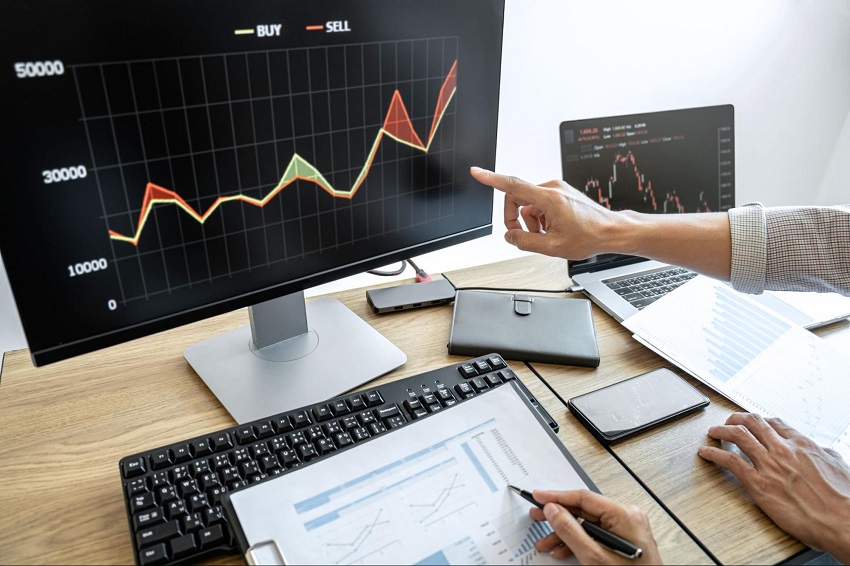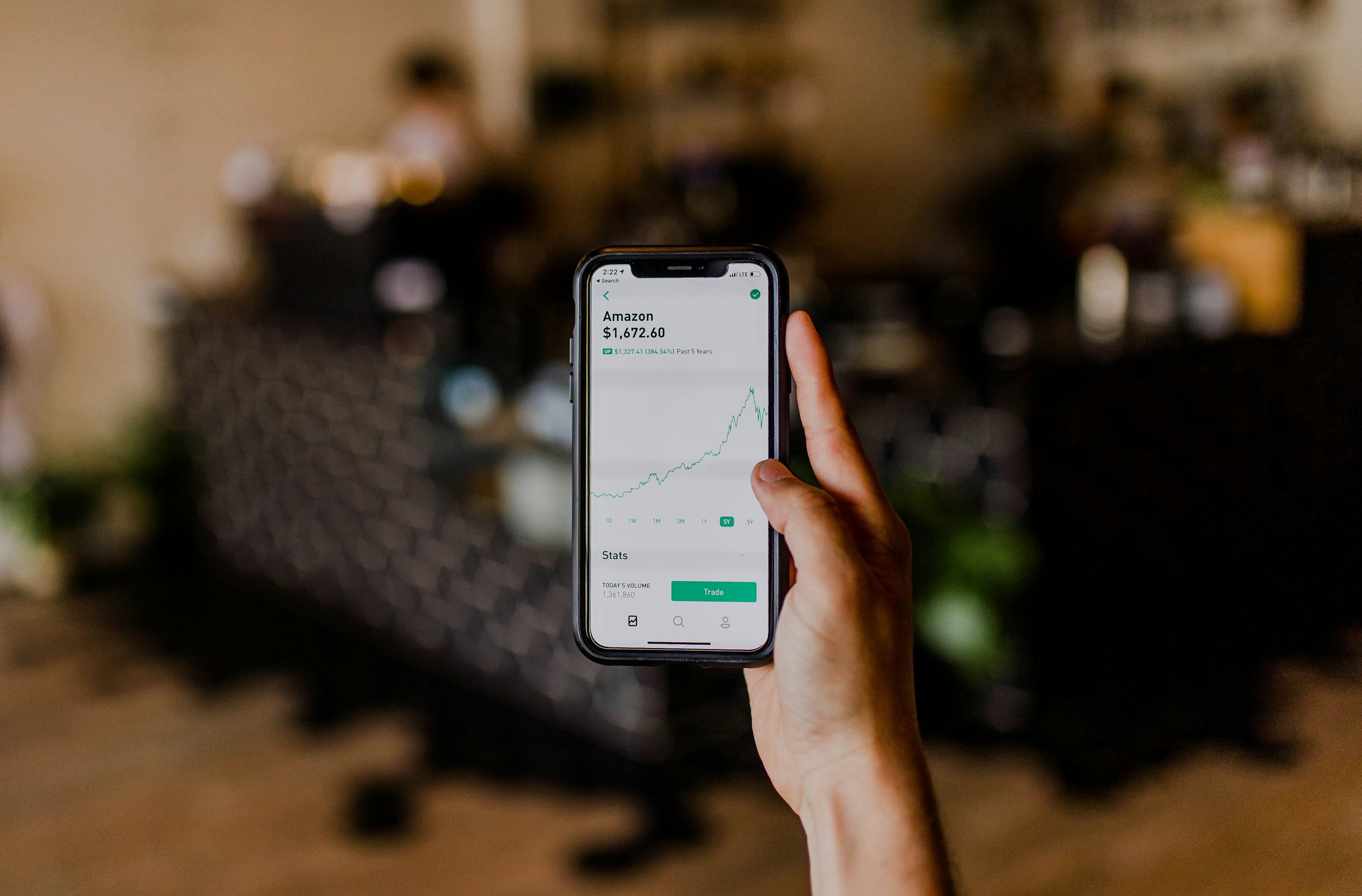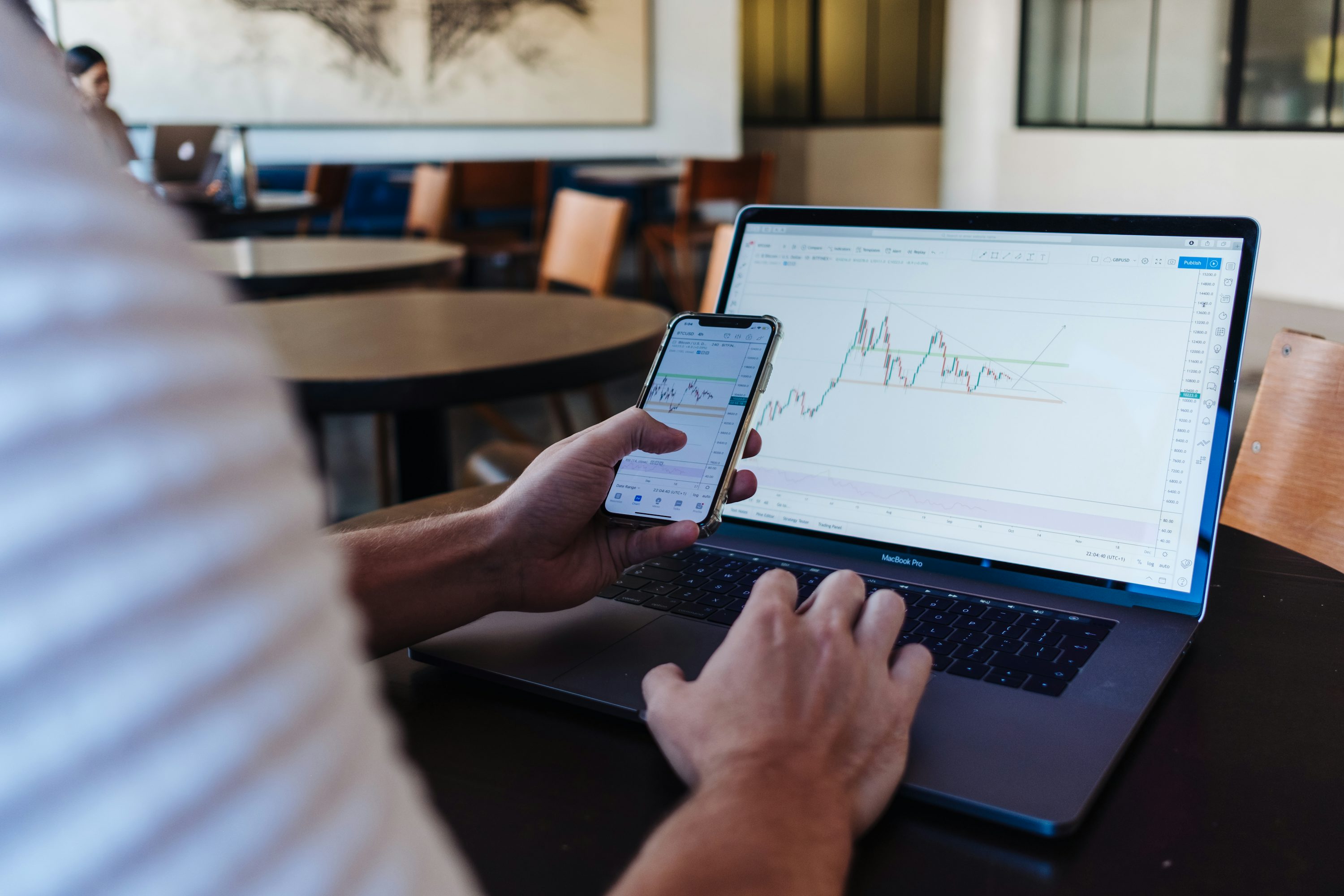7 Best Algorithmic Trading Risk Management
Discover 7 best practices for algorithmic trading risk management to reduce losses and improve trading strategies effectively.

In the world of trading, the allure of algorithmic trading is undeniable. It promises the thrill of high-speed deals and the potential for big rewards. But there's a flip side, such as hefty risks that can drain your capital in the blink of an eye. For those eager to explore where to learn trading, understanding how to manage these dangers is crucial. This guide will help you venture into this thrilling yet perilous domain armed with the knowledge to protect your investments and maximize your returns.
Ready to take your trading skills to the next level? AquaFunded's funded trading program can help you make the most of your capital while letting you trade with their funds, so you can boost your potential without risking your own money.
Pros and Cons of Algorithmic Trading

The Pros of Algorithmic Trading
Lightning-Fast Execution
Algorithmic trading operates at incredible speed, executing trades in milliseconds. This rapid response allows you to capitalize on even the most minor fluctuations in asset values, turning micro-movements into potential profits.
Elimination of Human Error
Algorithms remove human error from trading decisions. They don’t misread information, fall prey to cognitive biases, or let emotions cloud judgment. This leads to more accurate and consistent trading outcomes.
Advanced Data Processing
Modern algorithms are powered by artificial intelligence. They can process enormous amounts of data to make informed decisions. With AI, these systems analyze everything from financial reports to social media trends, making more accurate predictions by considering more variables than a human ever could.
Backtesting Capabilities
Algorithms allow you to simulate countless scenarios to optimize trading strategies. You can adjust parameters to find the most effective approach without risking actual capital.
Automated Risk Management
With algorithmic trading, you can set strict risk management criteria. The algorithm will adhere to these guidelines, ensuring consistent application of your risk tolerance. This helps avoid the pitfalls of human error in risk assessment.
The Cons of Algorithmic Trading
High Initial Costs
Developing a custom algorithmic trading system requires significant investment. You need to hire skilled programmers and allocate resources to build and maintain these systems. While costly upfront, it’s a strategic investment that can save money over time.
Need for Constant Updates
Trading algorithms require regular updates to remain effective. You must adapt to changes in technology and market conditions, which means ongoing collaboration with programming experts.
Regulatory Challenges
Algorithmic trading is subject to strict regulations in many countries. You must navigate these laws to ensure compliance. This can be a complex process, especially for newcomers to the field.
Ongoing Monitoring Required
Even the best algorithms can falter in unpredictable markets. You must continually monitor your trades to ensure the algorithm performs as expected. This oversight is crucial, especially during market downturns.
7 Tips for Algorithmic Trading

1. Aqua Funded: Power Your Trading Without Risks
Why risk your capital when you can trade with AquaFunded? This platform offers access to accounts up to $400K with unmatched flexibility, no time limits, straightforward profit targets, and the chance to keep up to 100% of your earnings. Over 42,000 traders have already pocketed over $2.9 million in rewards, all with a promise of payment within 48 hours. Whether you choose instant funding or want to prove yourself through customizable challenges, AquaFunded gives you the tools to succeed.
2. Strategy Development: The Blueprint for Success
Your strategy is your compass. Begin with a hypothesis, then code, backtest, and walk forward test before going live. This methodical approach ensures you’re prepared for real-world trading.
3. Data Vendors: Your Source of Truth
A reliable data vendor is crucial. These vendors provide accurate, formatted market data, free from errors like duplicates or missing values, which are common in live and historical data. With firms like Bloomberg, Thomson Reuters, and Moody’s Analytics, you get the precision needed for developing effective strategies.
4. Leveraged Products: Handle With Care
Leverage can amplify gains, but it also magnifies losses. Imagine holding a $100,000 position with only $500 of your own money. If the market falls, not only will you lose your $500, but you could face a margin call requiring additional funds to cover the loss. Be cautious and use leverage wisely, especially with products like ETFs that have additional costs. Hedge funds can be a safer option as they know when to leverage and when to hold back.
5. Backtesting: Your Secret Weapon
Backtesting removes emotions from trading decisions by testing your strategy on historical data. It’s essential to address biases like overfitting, look-ahead bias, survivorship bias, and ignoring transaction costs. There’s no set number of times you should backtest, but be wary of overfitting from constant tweaking.
6. Paper Trading: The Dress Rehearsal
Before diving into live trading, try paper trading. It’s a risk-free way to test your strategy’s accuracy and make adjustments as needed.
7. Risk Management: The Safety Net
Effective risk management protects against losses from unexpected events like natural disasters or pandemics. It involves setting stop-loss orders, diversifying investments, and using hedging strategies.
8. Continuous Learning: Stay Ahead of the Curve
The best traders never stop learning. Read up on concepts like market microstructure, statistics, technical analysis, options trading, machine learning, and Python. Check out free resources to expand your knowledge and stay competitive in the fast-paced world of algorithmic trading.
Related Reading
- How Long Does It Take To Learn Day Trading
- How Long Does It Take To Learn Forex Trading
- How Do You Backtest A Trading Strategy
- Which Trade Is Best For Beginners
- Do You Pay Tax On Forex Trading
- How Many Day Traders Are Successful
- How Much To Start Day Trading
- How To Start Trading As A Student
- Forex Trading Psychology
- How To Do Trading Business
Importance of Algorithmic Trading Risk Management

Complex Algorithms and Unforeseen Events
Algorithmic trading relies on sophisticated algorithms that process vast data sets to execute trades with precision. Despite thorough testing, these algorithms can misbehave due to unforeseen market events. Risk management is crucial here, enabling swift identification and response to anomalies, thus averting significant losses.
High-Frequency Trading (HFT) Risks
High-frequency trading executes numerous trades in mere milliseconds, aiming for rapid gains. However, this method can expose traders to risks when markets experience sharp and sudden price shifts. Effective risk management can automatically halt trading during extreme market volatility, preventing uncontrollable losses.
System Glitches and Failures
Algorithmic trading is heavily dependent on technology. Glitches, connectivity issues, or system failures can lead to unintended trades or losses. Strong risk management strategies involve fail-safes and circuit breakers that stop trading if technical problems arise, preventing potentially devastating financial impacts.
Regulatory Compliance
Maintaining compliance with regulatory frameworks is essential for ensuring market fairness and transparency. Effective algo risk management includes measures to align trading algorithms with regulatory guidelines, avoiding legal pitfalls and reputational damage.
Market Liquidity and Slippage
The speed and frequency of algorithmic trading can influence market liquidity. In illiquid markets, slippage occurs when executed trades differ from intended prices. Risk management systems help mitigate slippage and manage liquidity risks, ensuring smoother trading operations.
Black Swan Events
Unexpected events, like geopolitical crises or natural disasters, can cause extreme market volatility. Risk management strategies include scenario analysis and stress testing to evaluate algorithmic performance under extraordinary circumstances, helping safeguard against severe disruptions.
Overfitting and Data Bias
Algorithmic strategies are often developed using historical data, risking overfitting where strategies excel in testing but fail in live markets. Continuous monitoring and adjustment of algorithms are crucial to prevent overfitting and mitigate data biases.
Human Errors and Oversight
Even the most advanced algorithms require human oversight for monitoring and adjustments. Risk management practices include real-time monitoring by experienced traders who can intervene if algorithms deviate from expected behavior or if market conditions change unexpectedly.
Transform your trading expertise into substantial profits without risking your capital. AquaFunded's funded trading program offers accounts up to $400K with the most flexible trading conditions, no time limits, easy profit targets, and up to 100% profit split. Join over 42,000 traders worldwide who've earned more than $2.9 million in rewards, backed by our 48-hour payment guarantee. Start trading today with instant funding options or prove your skills through our customizable challenge paths and keep up to 100% of what you earn.
Related Reading
- How To Learn Trading Online
- Is Day Trading Worth It
- Is Day Trading Hard To Learn
- Trading Strategy For Beginners
- Position Trading Strategy
- Profitable Gold Trading Strategy
- Profitable Gold Trading Strategy
- Trading Strategy For Beginners
- Position Trading Strategy
- Option Trading Technical Analysis
7 Best Algorithmic Trading Risk Management

Keep Your Positions in Check
Setting position limits is key to curbing exposure. Define maximum thresholds for trade sizes so your algorithm doesn’t inadvertently take on excessive risk. This is crucial during periods of high volatility or unforeseen conditions.
Stop-Loss Savvy
Automate exit strategies to limit losses. Fixed-price stops offer a clear exit level but might trigger too soon with market noise. Understand the difference between stop-loss and stop-limit orders. Stop-loss orders guarantee execution but can slip in price. Stop-limit orders give you control over price but might not execute in fast-moving markets.
Stay on Top of Performance
Real-time analytics can help you track critical risk indicators. Use tools like Value at Risk (VaR) to estimate potential losses and drawdown tracking to observe declines from peak equity. Monitor leverage exposure per trade and assess liquidity risk and trade volume at short intervals.
Be Prepared with Emergency Controls
Fail-safe mechanisms are essential for responding to adverse conditions. Use circuit breakers, market-level stoppages can halt trading during significant declines. Implement custom kill switches at the system level to stop your algorithm in response to sudden anomalies or catastrophic events.
Holistic Portfolio Risk Management
Manage strategy exposure beyond individual trades. Diversify strategies across markets, instruments, or styles. Conduct correlation analysis to avoid concentrated exposures and perform stress testing to assess performance under extreme or adverse scenarios.
Smart Position Sizing
Determine trade size using structured frameworks. Percentage-based sizing risks a fixed portion of capital per position. Volatility-adjusted sizing uses tools like ATR or VIX to reduce exposure during turbulence. Mathematical models such as the Kelly Criterion or Optimal F can optimize sizing based on win rates, reward ratios, and risk tolerance.
Real-Time Monitoring Matters
Implement continuous oversight with advanced dashboards or AI tools. Track VaR, drawdowns, liquidity, leverage, and trade flow as they evolve. AI-enabled platforms can inform immediate responses, alerts, and parameter adjustments to keep execution disciplined and aligned with risk protocols.
Join Our Funded Trading Program Today - Trade with our Capital and Keep up to 100% of the Profit.

AquaFunded is like a cheat code for traders. They let you get up to $400K in account funding to trade with without risking your own money. Serious game changer. You get immediate access to the capital you need to start trading, and they offer the most flexible conditions out there. This means no time limits to hit your targets and earn up to a 100% profit split, meaning you can finally start making serious money for your skills.
Trading with Confidence
The best part? AquaFunded makes it easy to start trading with instant funding options. You can either prove your skills through customizable challenges or just start selling from day one. Either way, you keep up to 100% of what you earn. This means you can make serious money without risking anything up front. And with a 48-hour payment guarantee, you’ll never have to worry about getting paid.
Join the AquaFunded Community
AquaFunded is already trusted by over 42,000 traders worldwide who have collected more than $2.9 million in rewards. It’s easy to see why. With their flexible conditions and instant funding options, traders finally have the tools they need to succeed.
Related Reading
- Forex Risk Management Tools
- Best Forex Trading App For Beginners
- What Is Risk Management In Trading
- Day Trading Risk Management
- Trading Risk Management Tools
- Best Day Trading Platform For Beginners
- Best Indicators For Swing Trading
- Best Platform For Day Trading Crypto
- Best Beginner Trading App


